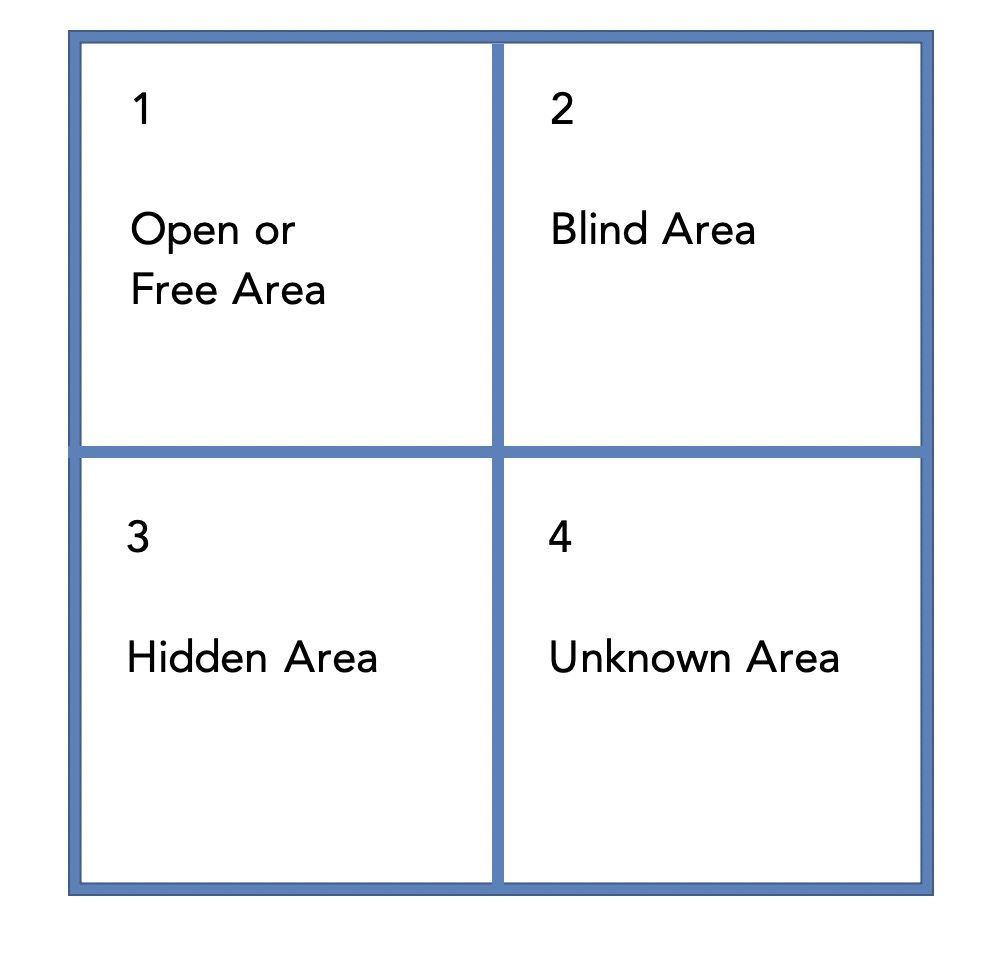Self-awareness is a funny thing. Depending on the situation, we can be commended for having tons of it or accused of having none at all—with all of the various shades of gray in between.
Self-awareness is something we all should have learned more about in school. It is too important to leave to chance. Since that wasn’t a required course or even an elective for the vast majority of us, how do we make up for lost time? My short answer is spending a little “quality” time with the Johari Window.
WHAT IS THE JOHARI WINDOW?
Definition: A diagram used to illustrate people’s level of self-awareness and how to raise their game. Note: Rarely are the four quadrants of equal size.

We’re humans with brains, feelings, tempers, and the ability to reason. So the quadrants morph and shift along the way.
When my career transitioned from all technical and product training into organizational development, I had a lot to learn. The good news is I couldn’t get enough of the materials written about working with people to improve their performance and business outcomes. Early on, I learned about the Johari Window (Joseph Luft and Harry Ingham, 1955). This concept has stuck with me and has guided and informed my work ever since. I’ve used it:
- When forming questions to uncover challenges teams or individual leaders are having
- To formulate a working plan for how to proceed after a team intervention or discussion
PICK A QUADRANT
The old-school version of the Johari Window was labeled this way:
- Conscious Competence
- Unconscious Competence
- Conscious Incompetence
- Unconscious Incompetence
That’s a little harsh, but descriptive. Today, the quadrants commonly are labeled this way:
1. Open/Free Area
What the person knows about him/herself and also is known by others: open area, open self, free area, free self, or “the arena”
2. Blind Area
What the person doesn’t know about him/herself, but what others know: blind area, blind self, or “blind spot”
3. Hidden Area
What the person knows about him/herself that others do not know: hidden area, hidden self, avoided area, avoided self, or “façade”
4. Unknown Area
What the person doesn’t know about him/herself and also what others don’t know: unknown area or unknown self
Source: BusinessBalls.com
HOW TO USE THE JOHARI WINDOW
- When coaching others, use the Johari Window as the basis for formulating your continuous dialog. Ask your “coachee(s)” to do the same with you, too.
- Use it when assessing team members’ knowledge and skill with new tasks and assignments.
- It’s a great way to raise the level of transparency between members of newly formed teams.
- Leverage it to check in on your own level of self-awareness and raise your own self-awareness game. After all, we’re never too old to learn!
Dawn J. Mahoney, CPLP, owns Learning in The White Space LLC, a freelance talent development (“training”) and instructional design consultancy. She is passionate about developing people through better training, better instructional design, and better dialog. Mahoney asks the tough questions to ensure the training content is relevant to the work and performance expectations. She does this work because she loves to see the moment when the learning “dawns” on her learners. If you need help, get in touch with her at: dawnjmahoney@gmail.com.


